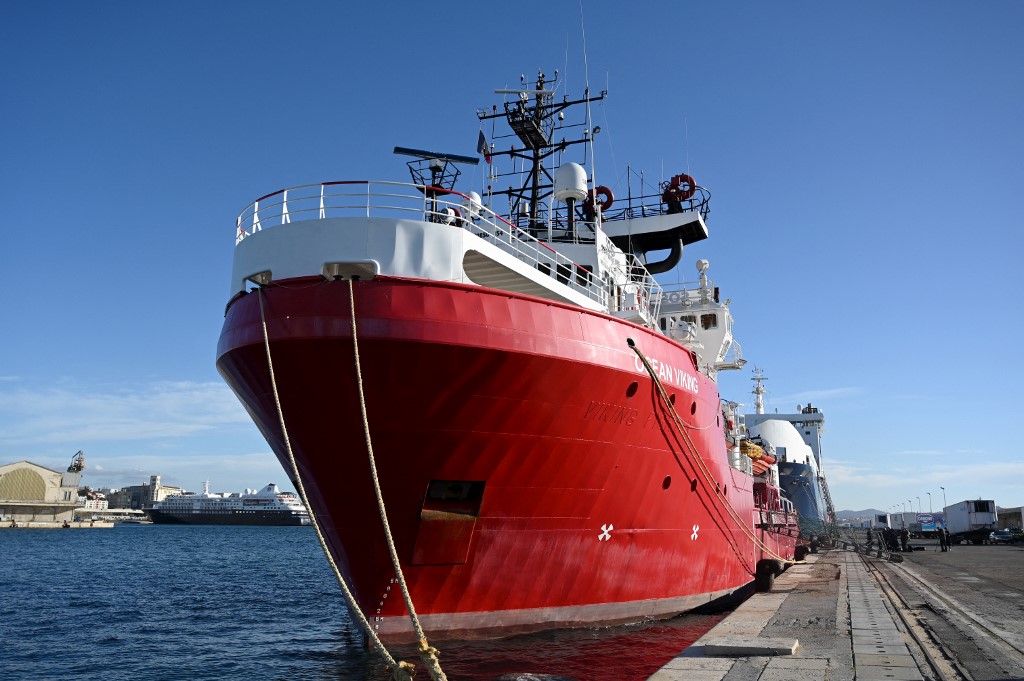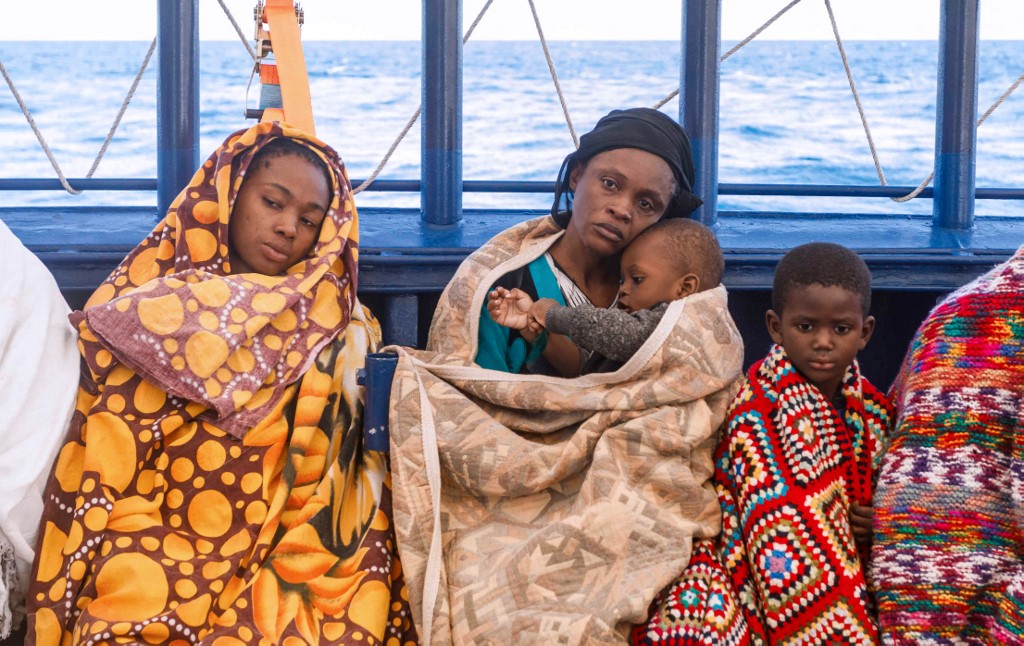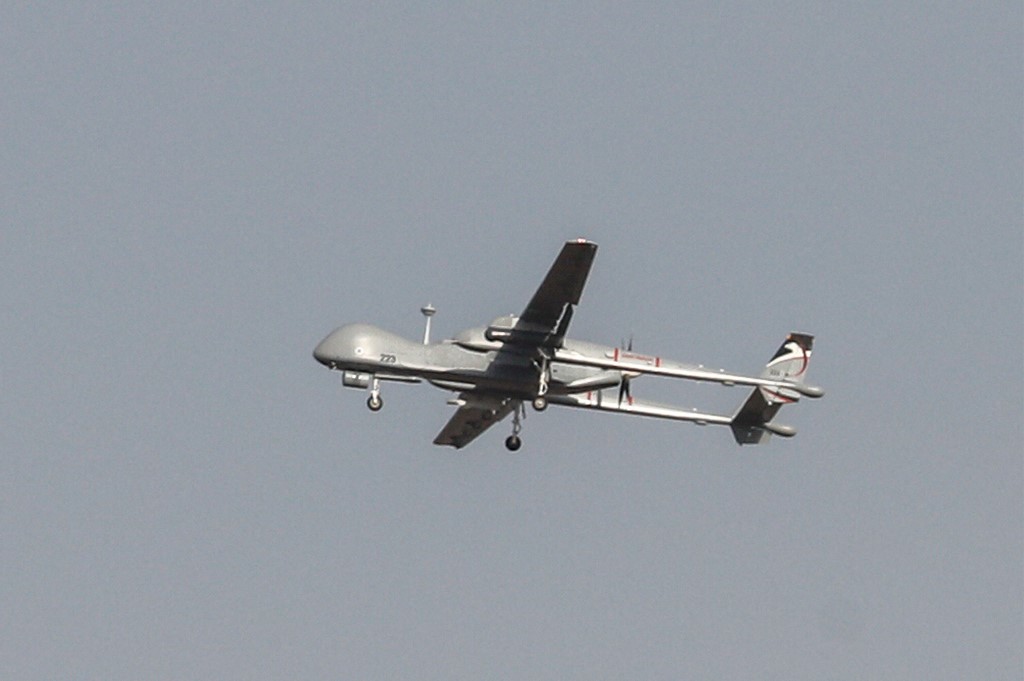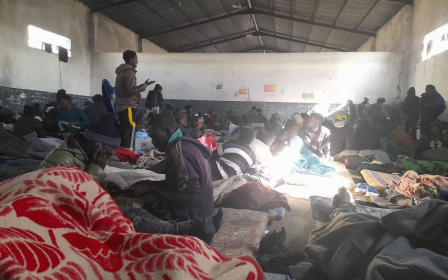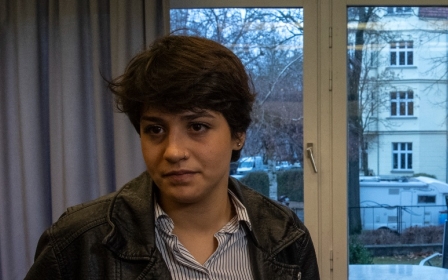No rescue from above: Europe's surveillance in the Mediterranean leaves migrants to their fate
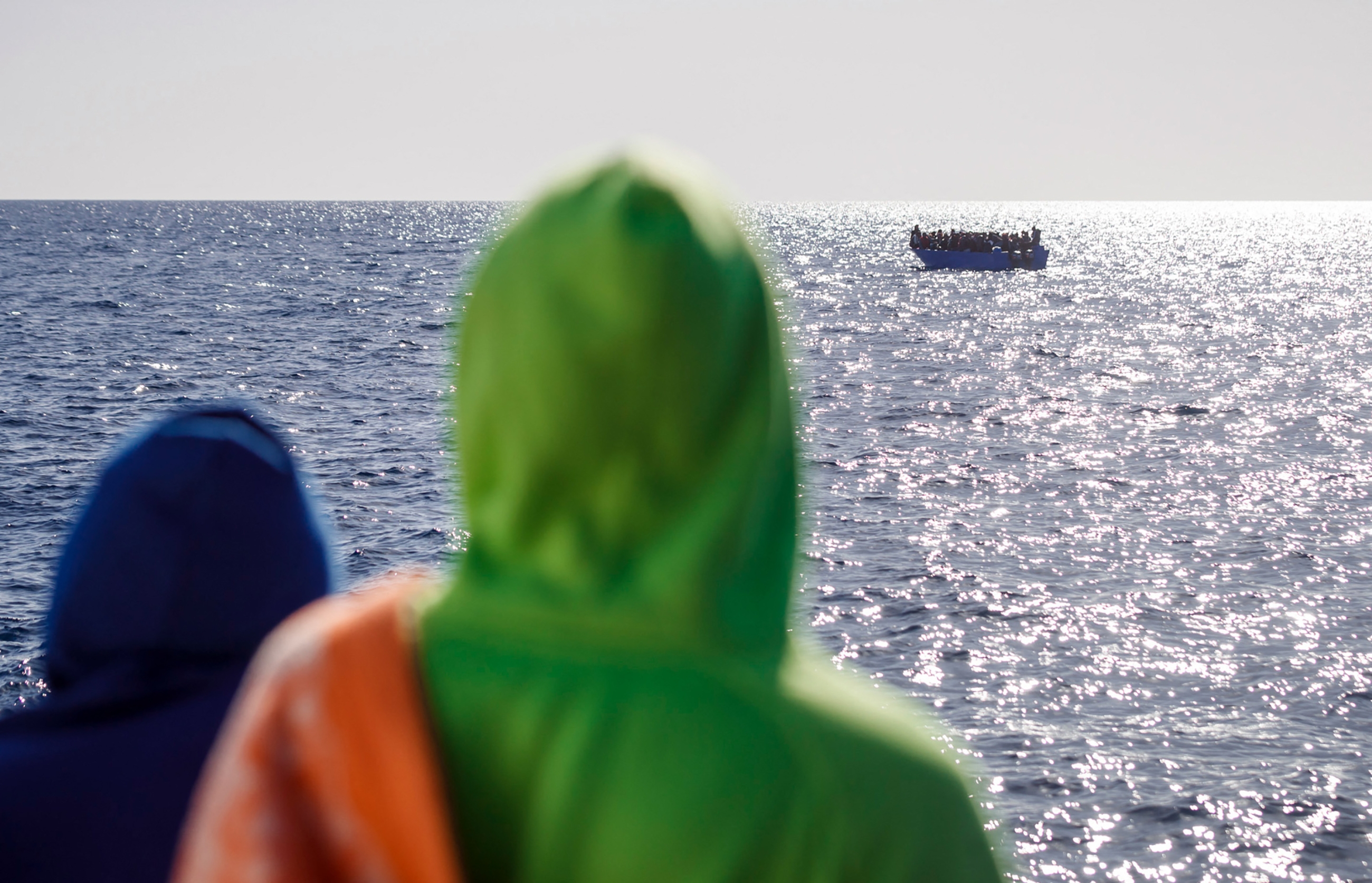
On 22 April last year, off the coast of Libya, the Ocean Viking spotted the remains of a rubber dinghy. Eviscerated by the previous night’s storm, its deck was missing and the lifeless bodies of its passengers floated around it. A white aircraft circled the scene, then disappeared.
The search-and-rescue vessel, run by the maritime-humanitarian organisation SOS Mediterranee, had responded to a mayday signal sent by Alarm Phone, a 24-hour activist-run rescue hotline in the central Mediterranean. With no state guidance, it had blindly conducted large search patterns throughout the night.
Britta Rabe has been operating the phones for Alarm Phone since its foundation in 2014.
'People were left to die not one, not two, but three times. The Libyan Coast Guard abandoned them… Frontex monitored the boat'
- Deanna Dadusc, Alarm Phone rescue hotline
“We’re not able to prevent a shipwreck,” she told Middle East Eye. All she could do was stay on the phone and repeatedly relay GPS positions to the stubbornly unresponsive Italian, Maltese and Libyan coastguards.
Over the course of 10 hours, the rescue team repeatedly tried to relay the GPS positions of the rubber dinghy, whose passengers were fighting for their lives, to the respective coastguards. The weather was bad. The line was patchy.
New MEE newsletter: Jerusalem Dispatch
Sign up to get the latest insights and analysis on Israel-Palestine, alongside Turkey Unpacked and other MEE newsletters
As well as its location, Alarm Phone was relaying the panicked messages coming from the dinghy. Water was leaking into the boat and it was being overwhelmed by waves that were several feet high.
The activity at the hotline and the desperate struggle taking place on the dinghy stood in stark contrast to the response of the authorities, who either didn’t pick up the phone or shrugged off responsibility.
The Maritime Rescue Coordination Centre in Rome (MRCC Rome) told Alarm Phone curtly to inform “competent actors”. It meant the Libyan Coast Guard, which could not be reached.
When the hotline finally got someone on the phone, they were told the Libyans could not launch a boat, due to the poor weather conditions. Alarm Phone later found out the coastguard had intercepted another boat that night.
Seven hours later, the dinghy's passengers spotted a plane circling them. It was the Osprey 3, a surveillance aircraft flown by Frontex, the European Union's border agency. It promptly quit the scene, informing national rescue centres in Italy, Libya and Malta and issuing a distress call to alert nearby ships.
"Several merchant vessels in the area proceeded to render assistance," a Frontex spokesperson told MEE. "Because of the worsening weather conditions, and the fact that the plane was running out of fuel, it had to return to base late at night."
Alarm Phone’s last contact with the dinghy was at 8.15pm on 21 April, when the line went dead.
The following day, the Osprey 3 returned to the scene to find the remains of the boat and its passengers.
“After the shipwreck we were particularly angry, because in many situations there is a shipwreck and you think, what could have been happening differently?” Deanna Dadusc, another Alarm Phone volunteer, told MEE.
“But in this case we had been in contact with the boat, we had accurate GPS positions, we tried to mobilise all authorities.”
The morning after, another search-and-rescue flight was organised. It spotted only a deflated rubber boat and one dead body in the water.
Asked about the incident, the Frontex spokesperson said: "Once again, criminal gangs, putting profits above life, crammed desperate people onto an unseaworthy boat in terrible weather conditions and pushed them out into the sea."
Dadusc was not in contact with the dinghy, but undertook the painstaking detective work of piecing together the night’s events from the wreckage.
“People were left to die not one, not two, but three times. The Libyan Coast Guard abandoned them… Frontex monitored the boat… they left because the weather conditions were too bad.”
Piecing this all together, Dadusc could only draw one conclusion: “This was a coordinated effort.”
'Pretending' to save lives
For Dadusc and Rabe, the incident in April was no isolated tragedy. It was part of a pattern.
When Rabe first started work in this field in 2014, state actors were cooperative. But the situation quickly deteriorated after 2016. “It got worse and worse,” she said.
The steady removal of rescue assets, beginning with the curtailing of the Italian government’s Mare Nostrum operation, which lasted from October 2013 to October 2014, and a shift to aerial surveillance by Frontex from April 2019, created a vacuum in the central Mediterranean.
This is why the people clinging to a sinking dinghy last spring were sent a surveillance aircraft instead of a rescue ship.
This shift has had a tangible impact on Rabe and Dadusc’s work. All they can do is stay on the phone and relay distress calls, knowing they will fall on deaf ears.
“[The people in distress] ask us, ‘OK, so when is the rescue coming?' And we have to say, 'Sorry, we don’t know, we can’t tell you, because there is nobody reacting,'” Rabe said.
“So we have to find ways to tell them on one side the truth, and on the other hand we have to somehow support them to survive these hours until any rescue shows up. It makes us angry and desperate.”
But this has not deterred migrants from attempting the journey across the Mediterranean, from one continent to another, on flimsy pieces of rubber.
MEE spoke to Rabe and Dadusc shortly before two shipwrecks off the Libyan coast, in which more than 160 people died, between 17 and 18 December. On Sunday 26 December, 14 more bodies washed up on the Libyan shore.
In recent months, deaths in the central Mediterranean have soared, with 2,041 refugees recorded dead and missing in 2021 by the IOM, the UN migration agency - up from 1,448 in 2020.
The numbers of illegal “pushbacks” by the Libyan Coast Guard, a consortium of militia groups and people smugglers, have also increased, according to IOM. About 31,500 people were intercepted in 2021, up from 11,900 the previous year.
“They pretend to save lives, but you can see from the numbers that this is not their main aim,” said Rabe.
All eyes on the sea
In 2012, the European Court of Human Rights ruled that Italy had violated human rights principles by spurning African migrants and asylum seekers on the high seas. The historic judgment, known as the Hirsi ruling, banned the refoulement of refugees to Libya.
Reacting to this, EU nations looked to deal with the situation at source, and began training and equipping the Libyan Coast Guard, so that migrants would not land on European shores.
For activists like Rabe and Dadusc, the central Mediterranean is becoming a “black box” that is harder and harder to navigate.
The stretch of water appears to be vacated by state actors, but it is heavily scrutinised by them from the air, with European aircraft supporting the coastguard.
The EU’s air surveillance relies heavily on the private sector, an opaque and unregulated web of arms and tech companies contracted by Frontex.
From 2005 to 2021, the Frontex budget swelled from €6.3m to €534m. For 2021-2027, the secured budget is €5.6bn.
Regulation in 2016 granted Europe’s border agency the ability to procure, loan and lease its own assets. Now it spends a sixth of its budget on aerial surveillance, chartering planes from private companies for its Frontex Aerial Surveillance Service (FASS).
The real time data is live-streamed to the European Border Surveillance system (Eurosur), an information exchange hub accessible to all EU member states, which collates information from their borders.
Drone wars
Last year, Frontex awarded contracts worth €100m to companies for the operation of unmanned drones to spot refugees and migrants attempting to cross the Mediterranean.
One €50m ($56m) deal went to European defence aerospace conglomerate Airbus and the state-owned Israel Aerospace Industries (IAI), to operate its Heron drone. Another €50m deal was signed with Israeli arms company Elbit Systems, to operate its Hermes 900 drone.
Both drones have been used by the Israeli military in its assaults on the Gaza Strip, meaning they can be promoted for border surveillance as “combat proven” equipment.
IAI claims its Heron drone can fly for over 24 hours, covering 1,000 miles at over 35,000 ft. According to Elbit Systems, the Hermes is capable of operating up to 26 hours at up to 30,000 ft. It is described as having “sharp senses” and a “lethal bite”.
“They are perfecting their aerial surveillance,” Matthias Monroy, activist and editor of German civil rights journal Burgerrechte & Polizei, told MEE.
“Compare this with a Frontex plane: depending on the size of the plane, it can fly 5-10 hours maximum, so it’s much easier to cover an area with a drone.”
The Frontex spokesperson told MEE the drones, which are not armed, allow the agency "to perform border surveillance and support rescue operations for longer periods of time."
In the central Mediterranean, the technology is another tool used by state actors to evade their legal obligations to rescue persons in distress - the law does not apply to unmanned aircraft.
A Potemkin village
“The drones are a game changer,” Felix Weiss, spokesperson for the sea-watch surveillance mission Moonbird, told MEE.
Referring to increased Frontex air surveillance and the corresponding rise in interceptions, he said “the number of pushbacks has increased a lot… we’d say up to 65 percent of persons trying to cross the central Mediterranean Sea are pushed back to Libya.”
While they don’t have a complete picture, as the drone was only active from May 2021, this correlation is reflected in Moonbird’s reports, which chart the flight tracks of drones hovering over the Libyan search and rescue zone, established in 2018 by the EU.
The report documents multiple instances of delayed rescues involving drones, and the presence of drones in connection with illegal “pushbacks” performed by the Libyan Coast Guard.
“Without the aerial surveillance, the Libyan Coast Guard would be absolutely blind,” said Weiss. “We have seen quite often that whenever Frontex is finding a boat, they are picking up the Libyan Coast Guard and guiding them straight to the boats.”
The Libyan Coast Guard is not connected to the Eurosur system, but published WhatsApp messages reveal an exchange of coordinates between Frontex and the coastguard.
The absence of any formal agreement between Frontex and Libya means they have to use alternative channels to communicate.
A spokesperson for Frontex told MEE the border agency had "never engaged in any direct cooperation with Libyan authorities and does not cooperate with the Libyan Coast Guard".
They said that "any time a Frontex plane spots a boat in distress, it immediately alerts the relevant Maritime Rescue Coordination Centres in the region: Italy and Malta, as well as Libya and Tunisia if the boat in distress is in their search and rescue region."
The spokesperson added that in an emergency, the agency tries to "deliver information about the whereabouts of boats in distress in any way possible to the people involved in the rescue operation. This includes emails but also phone calls, messages and, in extreme cases, mayday and radio calls in the blind."
'Whenever we see a rubber boat that has 150 persons on board, we have to call everyone. If this boat is spotted by us in the Libya SAR zone, then we have to contact the Libyan Coast Guard'
- Felix Weiss, Moonbird
Like many other aspects of the EU’s border policing, the establishment of the Libyan search and rescue zone in 2018 was a tool to deflect responsibility and evade the law.
“I think this is like a Potemkin village,” Monroy told MEE.
In response to a question put to them by Monroy and German Member of the European Parliament Ozlem Demirel, both the European Commission and the Council claimed they did not know the location of the Libyan Maritime Rescue Coordination Centre.
“So it was pretty clear this MRCC didn’t exist. But they still pretend it exists,” Monroy told MEE. “This is why I would say, it’s not legal that Frontex is passing this information to the Libyans and this explains why they use WhatsApp.”
"Frontex does not coordinate search and rescue operations," the EU border force spokesperson said. "Under international law, this is the job of the national Maritime Rescue Coordination Centres."
According to Sea-Watch and Alarm Phone, the Libyan MRCC does not meet mandatory requirements. Often impossible to reach, those working there do not speak English.
Weiss says the coastguard has attained the veneer of professionalism, bolstered by EU funding and equipment. Despite this, there has been no improvement in its performance.
“They are still really bad at what they do. Quite often they are drunk and on drugs… they’re not able to coordinate,” he claimed.
Activists say the coastguard is reluctant to conduct search and rescue missions because its primary aim is to push boats back, returning African migrants to African soil.
This was the reason, then, behind its refusal to launch a boat during the wreck last April.
When search and rescue is performed, Weiss said, it is performed clumsily in unwieldy boats, with little skill and without the right equipment.
“This is showing us that the Libyan Coast Guard has no interest in rescuing persons in distress, they only need the numbers to get more money coming from the EU,” he concluded.
Despite this, Moonbird and Alarm Phone are compelled to contact the coordination centre. “It’s horrible,” said Weiss. “Whenever we see a rubber boat that has 150 persons on board, we have to call everyone. If this boat is spotted by us in the Libya SAR zone, then we have to contact the Libyan Coast Guard.”
Surveillance makes the visible invisible
After the wreck on 21 April, Dadusc combed through Facebook posts from the families of the missing. “In this case, we only managed to find out the identities of 20 people out of 130, and we’re still searching for more,” the Alarm Phone volunteer said.
This is the hardest part of the job for Dadusc. It is rare that most bodies are identified.
As with other wrecks, the deaths from the incident last April did not go totally unacknowledged. The Ocean Viking was there to record the evidence. Without it, Alarm Phone struggles to convince families of their loved ones’ deaths, “because nobody is actively searching for the bodies,” Dadusc told MEE.
For Dadusc, the work of counting and naming the dead is critical in making the violence in the Mediterranean visible. “While there is a lot of surveillance, it actually makes things more invisible.”
If it weren’t for the countersurveillance, supplied by Moonbird, the waters of the central Mediterranean would be even harder for Alarm Phone to navigate.
The footage recorded by Moonbird is also instrumental in Alarm Phone’s advocacy work. “We have documented dozens of shipwrecks… and nobody cares, but then when Moonbird is there and takes pictures, for people it becomes real,” said Dadusc.
The relationship is reciprocal. “We would be blind if it wasn’t for Alarm Phone,” Weiss said. After Alarm Phone informed them their aircraft resembled Frontex planes, Moonbird painted the belly of their plane red.
The work of activists like Weiss, Dadusc and Rabe shines a light on the increasingly wine-dark waters of the Mediterranean.
While they strive for transparency at the sea border, state actors and Frontex, despite having the latest surveillance technology at their fingertips, draw a shroud over the bodies that slip silently into its waters.
This article is available in french on Middle East Eye French edition.
Middle East Eye delivers independent and unrivalled coverage and analysis of the Middle East, North Africa and beyond. To learn more about republishing this content and the associated fees, please fill out this form. More about MEE can be found here.


